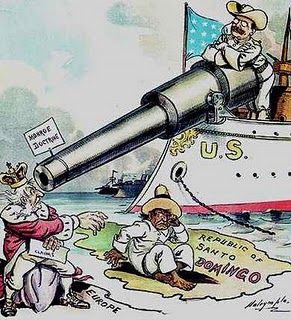Istanbul Institute of
Russian and Sovietic Studies

Their naming is not arbitrary and definitely not denoting these romantic polar lights. A gunboat diplomacy never consists of merely a military power show off — it is always accompanied by some symbolic messages that only-begotten by diplomates and historians. Romantization is the enemy of Truth, the connerie of the leftists. It’s an open information. But it’s a marginalized knowledge. In our times when humans got used to “think” by associations and short proclaims the nature of censor has changed too. Now we have ‘knowledge at disposal’ as opposed to the ‘marginalized knowledge’.
Having drowned into hot water with the surfacing of the scandalous sabotage to the North Stream pipeline and their bioweapon labs (which raises mind-tickling questions on the cause of the covid-19), the Nazi-Atlantic axis announced their naval exercises in the Baltic, naming them as “Aurora”.
This naming for this “gunboat diplomacy” is not arbitrary and “aurora” here is definitely not denoting these romantic polar lights. The polar lights can only be contemplated at the Northern latitudes of Bjuröklubb peninsula which is located about 700km far from the location of the military exercises. The military exercises will be held on Gotland Island area. Moreover, a gunboat diplomacy never consists of merely a military power show off — it is always accompanied by some symbolic messages only-begotten by diplomates and historians.
The message of these naval exercises is embedded in it’s name: “Aurora”. And this message justifies the alternate history thesis asserted by our Institute. Istanbul Institute of Russian and Sovietic Studies has long been the advocate of the thesis that the real Russian Revolution had started from 1928, with comrade Stalin’s coming to power — as long as of course we understand the term revolution as a progressive alteration of social order in socialist terms. Contrary to the widespread opinion, the so-called 1917 Big Russian Revolution or the October Revolution was a counter-revolutionary coup-d’etat aiming to halt and reverse the proto-revolutionary progressive period of Stolypin-Witte: it re-created the rural feudals, ie. kulaks, favored the middle class, ie. comprador merchants, ‘opened’ the economy at the disposal of ‘global’ financial market, and even payed back the cost of their hard and soft (propaganda) weaponry allocated for them (the so-called revolutionaries) by transferring gold from their lootings of domestic wealth abroad at the expense of millions dying by hunger and deseases and aimed to divide the country into it’s smallest possible pieces.
Romantization is the enemy of Truth.
Romantization is also the connerie of the leftists:
They say no revolution is possible without blood. Interestingly, some of them who now applaud revolutions are the same intelligentsia personnages, who, in the 90s, used to strongly condemn all kinds of revolutions in History by emphasizing exactly the same argument.
For those who still didn’t get the point:
The battleship Aurora is the symbol of the 1917 October counter-revolution. It’s cannon’s shot was taken as a signal to start storming the Winter Palace by a dozen of “revolutionaries” (not a big mass as depicted in Eisenstein’s movie).
But who opened the door of the Palace to them and ordered the guards —the women’s battalion— to retreat ?
It’s an open information. It’s easy to find it out by a short inquiry in the web. But this is a marginalized knowledge.
In our times when humans got used to “think” just by associations and by one or two sentence-length proclaims, the nature of censor has changed too: today we have two kinds of knowledges: knowledge at disposal as against to the marginalized knowledge. The former is the propaganda, the latter is the bitter Truth that is censored.
